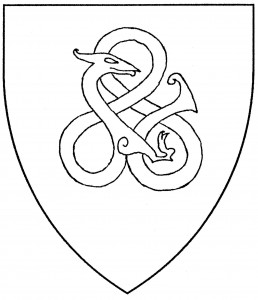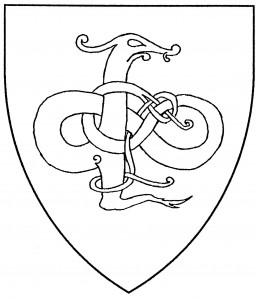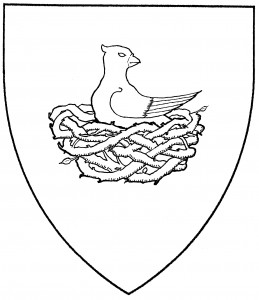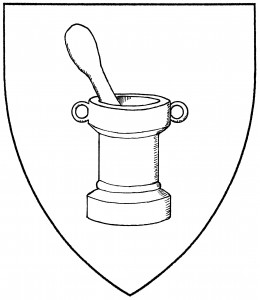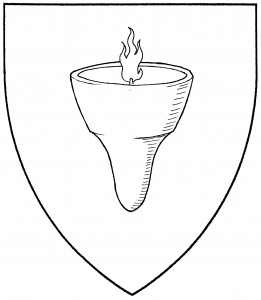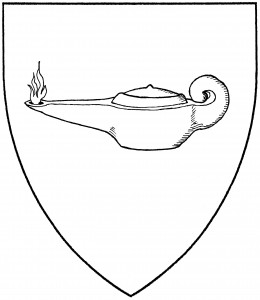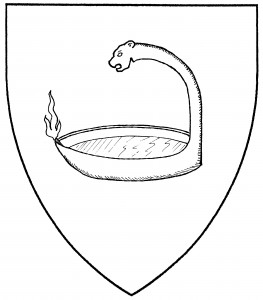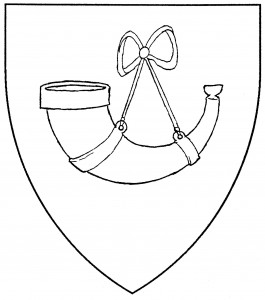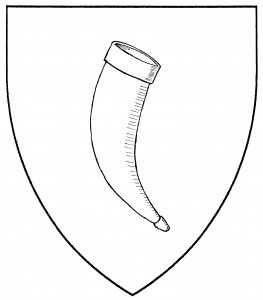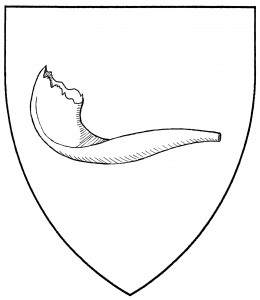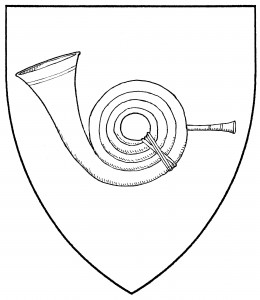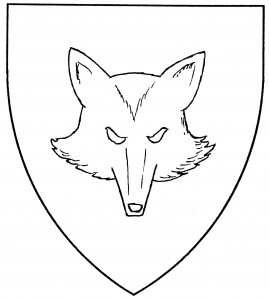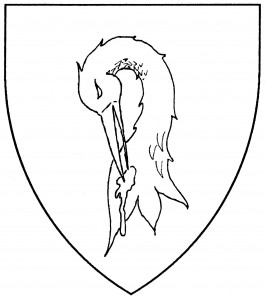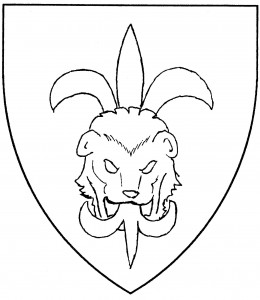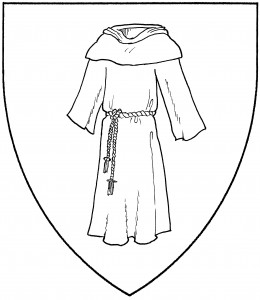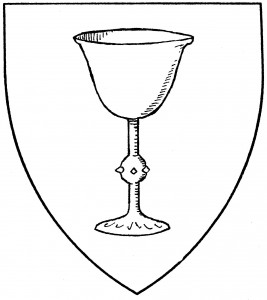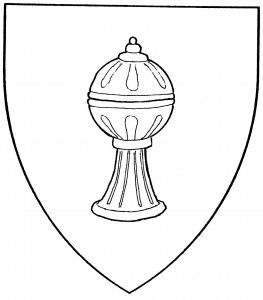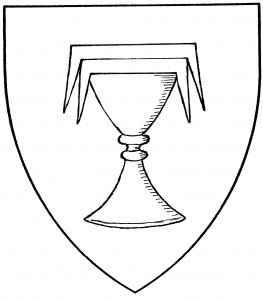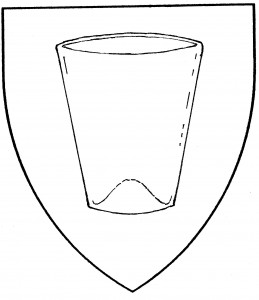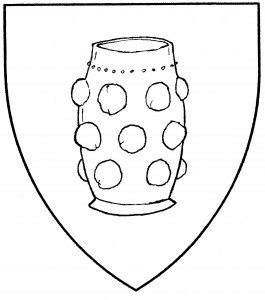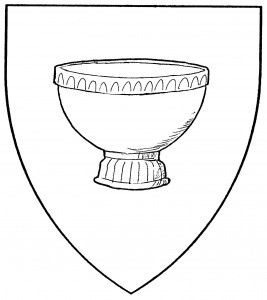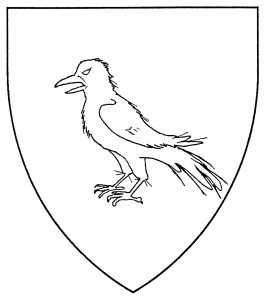
Mullet (Period)
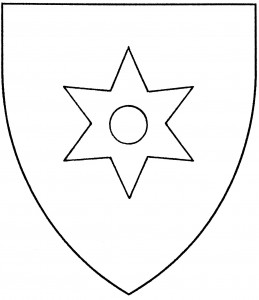
Spur rowel, or mullet of six points pierced (Period)
A mullet is a geometric figure, originally meant as the rowel of a spur, but commonly used to represent a star or other heavenly body. It’s an ancient charge, also called a “molet” in early blazons; it dates from at least 1244, in the arms of de Vere, Earl of Oxford [Asp2 221]. All mullets have a point to chief by default.
The default mullet has five points, as in the illustration. Mullets of six or eight points were also very common in period; examples with seven or nine points are found. Indeed, Society heraldry has seen mullets with as few as three and as many as twelve points. No difference is granted for the number of points.
Note that mullets with unusual numbers of points may be too readily confused with other charges. For instance, a mullet of three points is indistinguishable from a caltrap, and is only barely recognizable as a mullet; it is no longer permitted in Society armory for that reason. On the other end of the scale, a mullet of more than eight points is indistinguishable from a sun, and gets no difference from it (indeed, it will frequently be so blazoned).
A mullet may be “pierced”, with a circular hole in its center. In particular, a mullet of six points pierced (as in the illustration) may also be called a “spur rowel”.
Mullets are found “voided and interlaced” in period, as in the arms of Degelin von Wangen, 1605 [Siebmacher 119]. For many years, Society heraldry did not permit mullets of five points to be voided and interlaced: the motif was seen as a mystical or Satanic symbol. Currently, with the wider acceptance of wiccan religion, the motif is acceptable under the same guidelines as other religious symbols. Mullets with more points may likewise be voided and interlaced: in the case of six points, the result is the star of David.
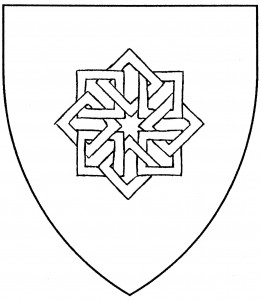
Mullet of eight interlocking mascles (SFPP)
Period armory shows us rare examples of a multi-pointed mullet with a single point greatly elongated (usually to base): cf. the arms of Beneditti, c.1550 [BSB Cod.Icon 275:137]. These are considered to be an artistic variant of the comet, and are treated as such. A “mullet of four points elongated to base” is acceptable, based on this pattern, but is considered a step from period practice. At one time, Society practice also allowed mullets to be “elongated palewise”, i.e., with one point elongated to chief and another to base; this is no longer permitted.
Society practice allows other charges to be combined to form a mullet, although the combination’s outline must resemble a mullet to be blazoned as such. Thus the Society has examples of, e.g., a “mullet of five pheons, hafts conjoined”, or a “mullet of eight interlocking mascles”. The latter is considered a step from period practice.
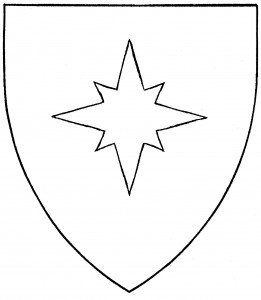
Compass star (SFPP)
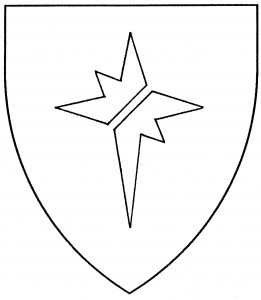
Rivenstar (Disallowed)
There are other variants of the mullet, unique to Society heraldry. The “compass star” is a mullet of four greater and four lesser points; its use is considered a step from period practice, and not permitted at all when elongated to base. (Likewise, any mullet of greater and lesser points is deemed a step from period practice: e.g., the “mullet of five greater and five lesser points”.) The “riven star” is essentially a compass star disjointed per bend sinister; as it has no period exemplars, the riven star is no longer registerable.
Some mullet variants are blazoned as though they were other charges: A “cross estoile” is a mullet of four points elongated to base; the usage does not appear to be period. A “sword of Höflichkeit” is an obsolete Society term for a mullet of four points elongated to base, gyronny Or and sable.
In English cadency, the mullet is the brisure of the third son. For related charges, see compass rose, cross estoile, estoile. See also sparks.
The King of Ansteorra bears: Or, a mullet of five greater and five lesser points sable within a laurel wreath vert, in chief a crown of three points, all within a tressure sable, overall issuant from base a demi-sun gules.
The Prince of Vindheim bears: Quarterly sable and gules, a laurel wreath and in chief three mullets of six points Or.
The Baron of Rivenstar bears: Azure, a riven star between in bend sinister two laurel wreaths, all argent.
The Baron of Brendoken bears: Per pale vert and sable, a mullet of eight points within a laurel wreath Or.
Áine ingen Néill mec Lugdech bears: Gules, three mullets argent.
Selivia de l’Estoile bears: Gyronny of six purpure and argent, a mullet of six points azure.
Aelfwine Denedom bears: Quarterly vert and sable, a mullet of four points throughout argent.
Paul of Sunriver bears: Azure, a compass star Or.
Robert FitzNorman bears: Azure, a mullet of eight interlocking mascles argent.
Michel le Blanc bears: Barry sable and argent, a mullet of three points pallwise throughout Or.
Katerine Rowley bears: Quarterly azure and Or, four spur-rowels counterchanged.
Ailis Linne bears as a badge: A mullet of five points voided and interlaced within and conjoined to an annulet azure.
